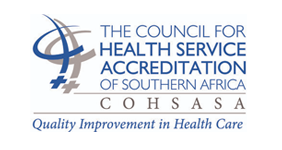The concept of boutique healthcare: Concierge medical practice
In the cattle-call of modern medicine, where health maintenance organisations (HMO) are controlling the purse strings, physicians cite dissatisfaction with managed care reimbursement contracts, the desire to lessen heavy patient loads, free the practice from dependency on insurance reimbursement, reduce paperwork, increase preventive care, and preserve personal and family time. Patients dissatisfaction with traditional medicine arises from a perception of impersonal care, long waiting times, short duration of appointments, increased use of midlevel practitioners (physician assistants and nurse practitioners), fewer benefits despite increasing premiums, and patient-doctor barriers.
Those common complaints from doctors and patients alike have spawned a niche market called concierge medicine.
WHAT IS IT?
Concierge medicine, also known as Boutique Medicine, Membership Medicine or Retainer Medicine, is a primary care physician practice that charges an annual fee to patients in exchange for enhanced medical care. Concierge healthcare offers a more intimate doctor/patient relationship, through a more personable, one-on-one relationship with their doctor. The concept of boutique healthcare revolves around the theory that patients would be willing to pay considerably greater fees for enhanced care. The model advocates a direct financial relationship between doctor and patient, reducing the role of the insurance company in setting limits on coverage.
A core element of concierge medicine is that the physician limits the size of his/her practice in order to increase the time available to spend in patient care. The concept basically entails is a situation whereby patients pay a set annual fee or retainer, and in exchange, doctors provide personalised care, better doctor care and superior customer service. Taken at face value, a concierge medical model creates a whole new stratum of healthcare delivery and quality through an upgraded scope of services and with a cap of no more than 400-600 patients per primary care doctor (see figure 1).
Figure 1
BACKGROUND
The first concierge medical practice was established in Seattle in 1996, when the Seattle Supersonics former team physician, Dr Howard Maron, wanted to make available the same level of medical care and attention provided to professional athletes to the general public. MD2, the company he founded, provided a spa-like experience to a select few patients who could afford the US$10,000-20,000 annual retainer fee (in addition to insurance premiums and costs).
Boutique medical practices enhances patient physician relationships by implementing a model-of-care that benefits both patients and physicians. For patients it means direct access to their doctors 24 hours a day via home phones, mobiles and emails, same day appointments and more undivided attention with longer physician face time, little to no waiting time, a focus on personalised preventive care, and sometimes even 24/7 house calls. For physicians it means more time nourishing individual patient relationships, a focus on preventive care, and a direct reimbursement that reflects the value of their time and services. Moreover many physicians are attracted to this new physician/patient relationship as they become more disappointed with lower reimbursements rates, greater administrative burdens, delayed payments, claims processing hassles from payers, increasing overhead and higher costs, particularly in the area of malpractice premiums, and the likes.
IS IT ONLY FOR THE RICH?
Concierge medicine has been criticised as a movement toward creating a higher level of care for people with greater financial resources. Ethicists and consumer advocates worry that concierge medicine promote a two-tiered health system of medicine in which willingness and ability to pay is necessary to receive high quality healthcare. Opponents of concierge medicine argue that it will disrupt healthcare delivery and erode health standards, remove physicians from the general supply, and limit the general public’s access to physicians.
Proponents of concierge medicine argue that healthcare is not an inalienable right and should be subject to free market forces. Proponents further argue that concierge medicine provides benefits to a variety of stakeholders. Patient health stands to benefit from concierge medicine because of the increased emphasis on wellness and preventive services, improvements in continuity of care and medical services provided, increased physician familiarity with patients and their unique medical needs, and improved compliance with accepted clinical guidelines. Around-the-clock physician access may reduce the number of trivial office visits or emergency department trips patients need to make, ensuring emergency departments are purely for genuine emergency cases.
Proponents also claim that benefits of concierge medicine extend beyond members and their physicians, resulting in healthcare improvements for society in general. Seeing fewer patients and having less paperwork to complete increases the amount of time that physicians have to support the traditional primary care practice that the vast majority of patients currently receive.
Supporters of concierge care claims that it’s lot like a private school education. Parents who wish to supplement their children’s education send them to private school, paying extra for a potentially more personalised education that offers more choices (at a cost). “Like education, luxury primary care is simply a response to a market need [that] serves the interests of both the consumers (patients) and suppliers (physicians).”
IN CONCLUSION
Although concierge patients may feel they are receiving higher quality healthcare because they have more physician time and attention, there is no scientific evidence at this time to support that assumption. However there are some claims highlighting statistical analysis showing that quality-of-care and patient satisfaction are significantly increased in a concierge system due to an emphasis on preventative care and exceptional physician services, quality, attention and hospitalisation rates are far lower than average resulting in considerable cost savings to the government and private insurers. On the contrary, it is possible that as the doctor spends more time caring for fewer patients, his clinical skills may worsen because of decreased volume and exposure to different patients.
I hope that this approach of ‘concierge’ does not remain a niche phenomenon, but instead helps establish a model for the delivery-of-care on a national basis. Many of the physicians using such practice models feel fortunate to again experience medicine as a labour of love, celebrated daily by the appreciation and well-being of the committed partners on the other side of the practices, the patients, who have truly found their ‘medical home’. The concierge model is even attractive in the sense that it brings back the old ‘Marcus Welby doctor’; the iconic 1970s television Dr Welby had seemingly unlimited time for his patients, representing a fusion of competence and compassion that today’s hasty visits don’t have time to cultivate.
























.png)























